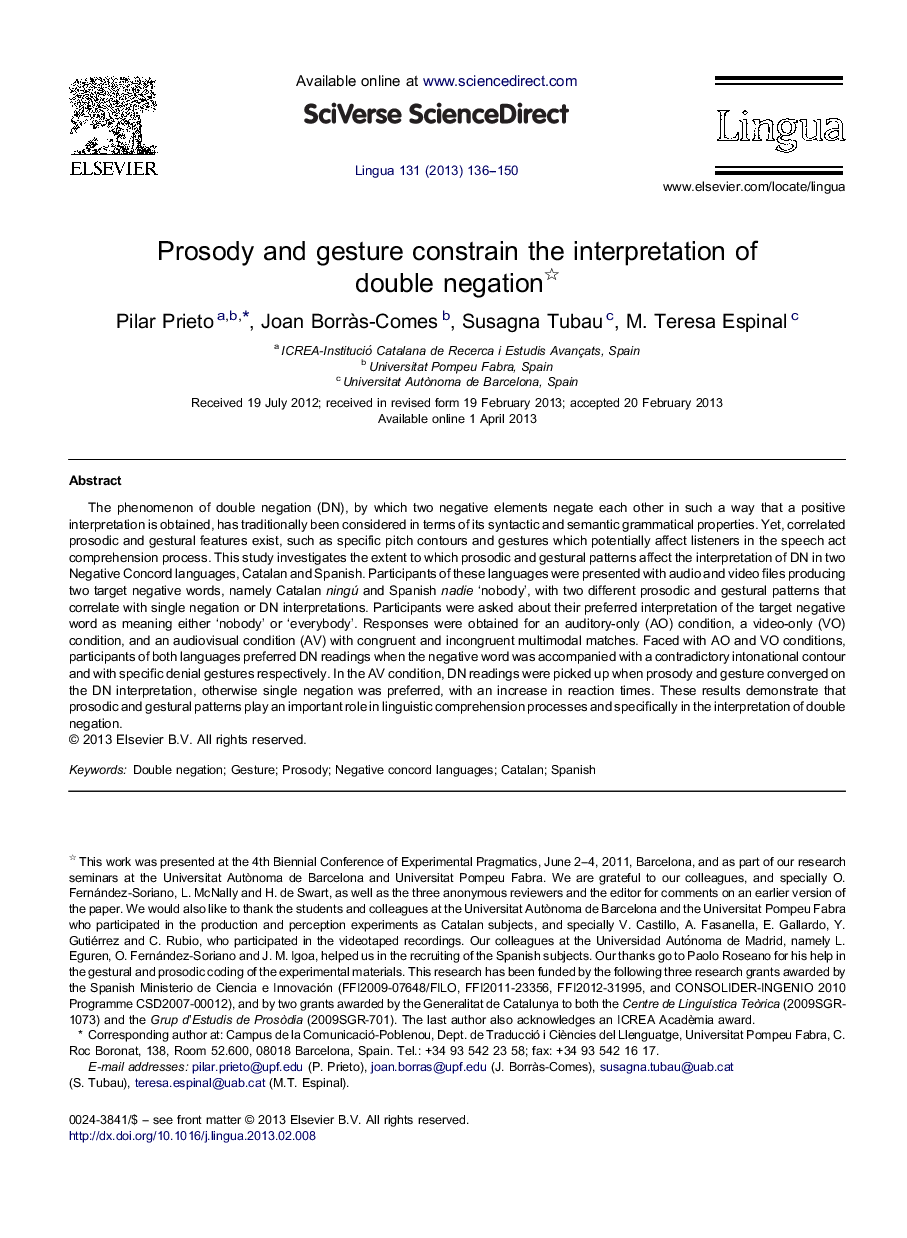| Article ID | Journal | Published Year | Pages | File Type |
|---|---|---|---|---|
| 935348 | Lingua | 2013 | 15 Pages |
The phenomenon of double negation (DN), by which two negative elements negate each other in such a way that a positive interpretation is obtained, has traditionally been considered in terms of its syntactic and semantic grammatical properties. Yet, correlated prosodic and gestural features exist, such as specific pitch contours and gestures which potentially affect listeners in the speech act comprehension process. This study investigates the extent to which prosodic and gestural patterns affect the interpretation of DN in two Negative Concord languages, Catalan and Spanish. Participants of these languages were presented with audio and video files producing two target negative words, namely Catalan ningú and Spanish nadie ‘nobody’, with two different prosodic and gestural patterns that correlate with single negation or DN interpretations. Participants were asked about their preferred interpretation of the target negative word as meaning either ‘nobody’ or ‘everybody’. Responses were obtained for an auditory-only (AO) condition, a video-only (VO) condition, and an audiovisual condition (AV) with congruent and incongruent multimodal matches. Faced with AO and VO conditions, participants of both languages preferred DN readings when the negative word was accompanied with a contradictory intonational contour and with specific denial gestures respectively. In the AV condition, DN readings were picked up when prosody and gesture converged on the DN interpretation, otherwise single negation was preferred, with an increase in reaction times. These results demonstrate that prosodic and gestural patterns play an important role in linguistic comprehension processes and specifically in the interpretation of double negation.
► Prosodic and gestural patterns constrain the interpretation of isolated negative words in negative concord languages. ► Prosody and gesture have a crucial role in pragmatic and linguistic inferences. ► Prosody and gesture obligatorily interact in multimodal communication.
